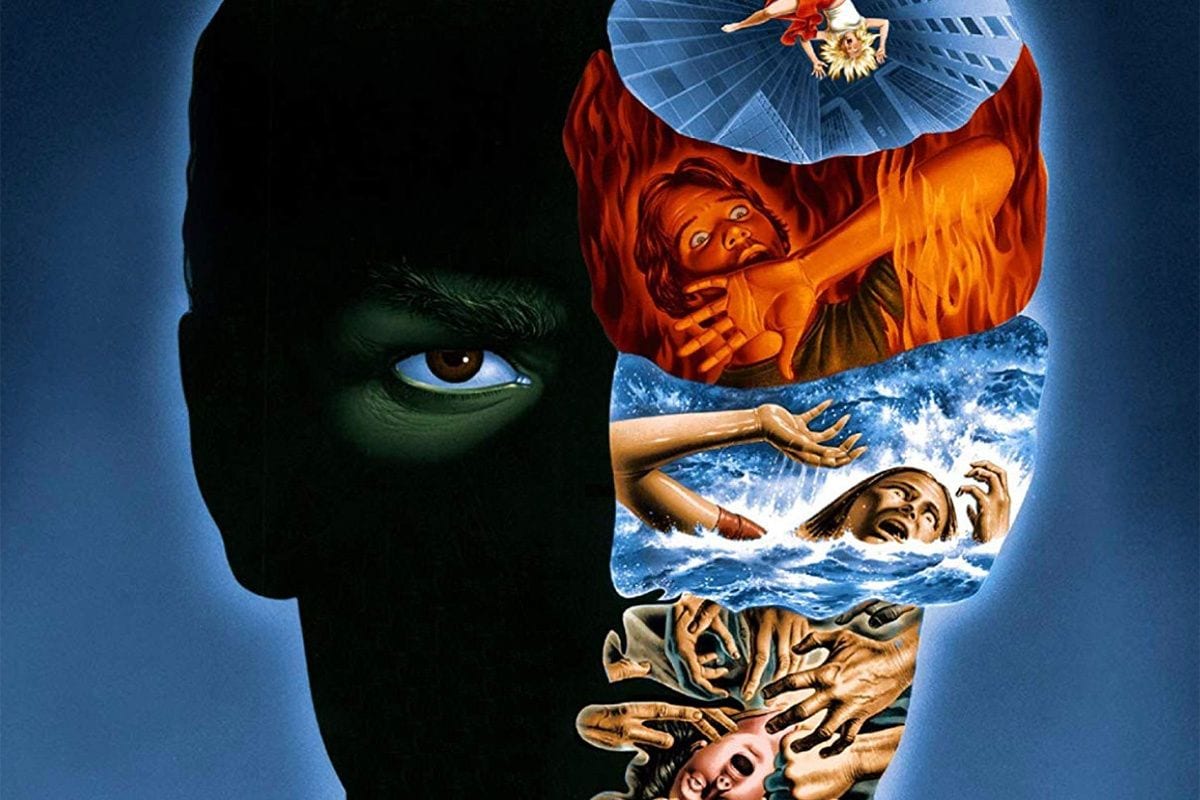It’s that time of year when witches fly at midnight and revenants walk the earth amid ghouls and beasties, mainly in search of candy, and when video companies put out their spookiest releases.
Dear Reader, we’ve sifted through many of this year’s ghastly Blu-ray offerings so that you don’t have to. The following round-up only includes those that deliver the most watchable goods for your macabre marathons and blood-curdling binges. These are older titles lacking in excessive grue and instead depending on the collaborative imaginations of filmmaker and viewer.
Most can even be watched safely in the company of your grandmothers and maiden aunts — if they can be persuaded to put down those extra-sharp knitting needles and stop lacing the Halloween cookies with ingredients unapproved by the FDA.
But first…

Death/Nosferatu from OpenClipArt (Pixabay License / Pixabay)
1. Häxan, Dir. Benjamin Christensen (1922) / The Criterion Collection

This Swedish-Danish production remains one of the most peculiar fabrications of silent cinema. Benjamin Christensen created a documentary essay about witchcraft by exploring its lore through what we now call dramatic recreations or docudrama. The results are strange and spooky visions of witches’ sabbaths. Satan himself is played by the director! All manner of nudity and perversity that got the film banned or censored are here, while the titles speculate on the nature of belief and draw parallels with modern psychology.
In America, Häxan became a counter-culture classic in 1968 when Beat icon William S. Burroughs lent his gravelly voice to a shortened version called
Witchcraft Through the Ages, which is included as a bonus along with the tinted original. Criterion’s Blu-ray upgrades a 2001 Criterion disc by offering the Swedish Film Institute’s mouth-watering 2016 restoration while retaining the older extras, including a historical commentary track and a recreation of the original 1922 score. Try it on a double feature with Carl Dreyer’s Day of Wrath (1943) or Sidney Hayers’ Burn Witch Burn (1962).
2. Hercules in the Haunted World, Dir. Mario Bava (1961) / Kino Classics
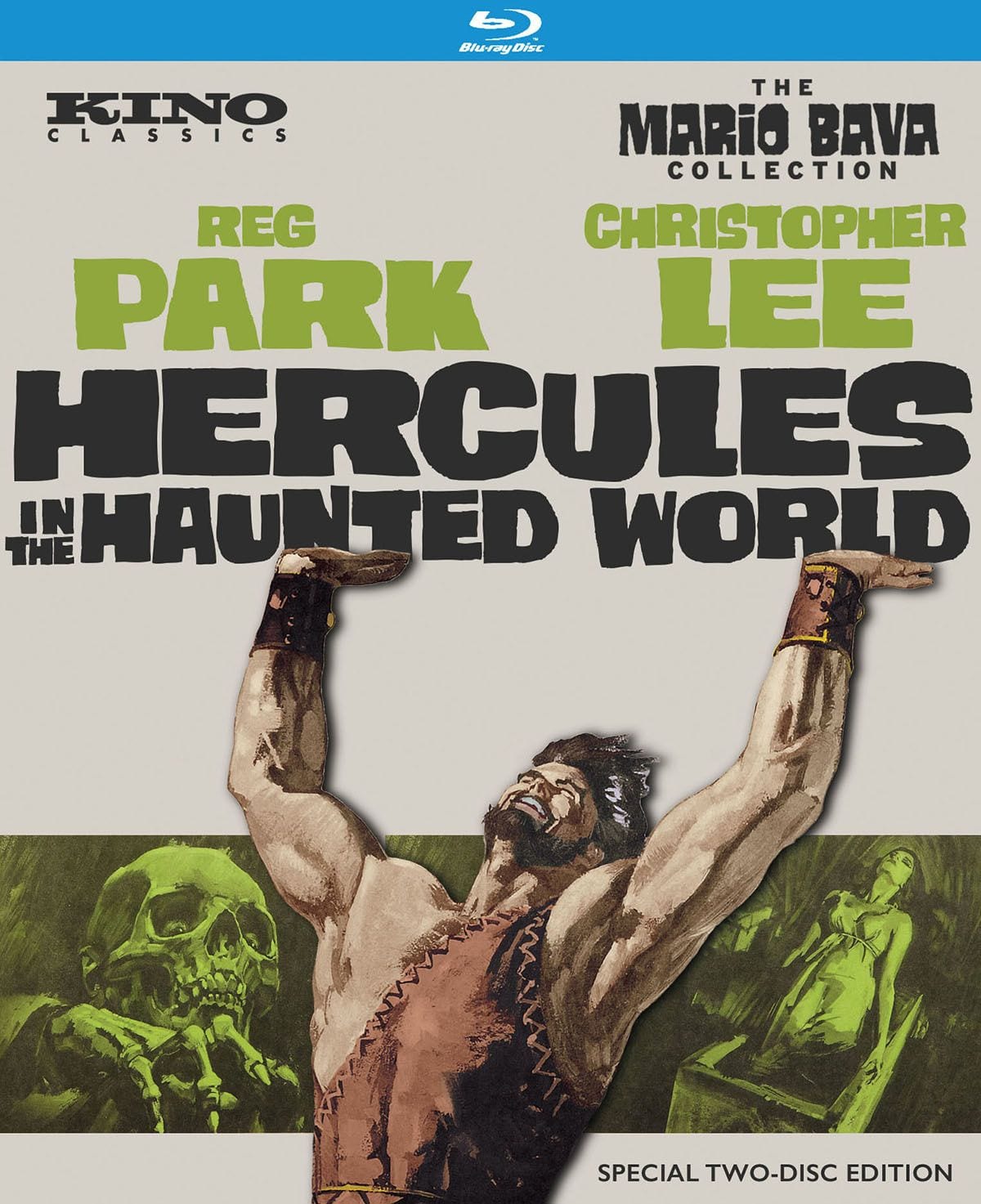
Special effects don’t come more eye-popping than this. In Italy’s wave of sword-and-sandal strongman epics, Mario Bava directed and shot a widescreen spectacle in which Hercules (Reg Park, a Mr. Universe winner) travels to Hades for complicated reasons and liberates a city from the vampiric evil of a bad guy (Christopher Lee). The plot isn’t only irrelevant but, as historian Tim Lucas points out in an information-packed commentary, highly inconsistent.
What matters is one deliriously colorful shot after another using a panoply of optical trickery: composites and superimposition, painted backdrops, Schüfftan mirrors, colored lighting and dye effects, forced perspective, models, and other bits of poetic audacity whose expertise is virtually lost in the CGI era. Mirrors and tinsel conjure the uncanny scenes with the mask-wearing sybil. The results are truly hallucinatory. No wonder the characters keep declaring that they’re waking from strange dreams; so is the viewer.
Kino Lorber‘s two-disc Blu-ray offers three versions. The Italian version (with German credits) is most complete and has the commentary. The slightly shorter US and UK versions, dubbed in English, are gratuitous, especially since we never get to hear Lee’s real voice, but the visuals of these 2K restorations are all in fabulous retinal-damage colors.
3. The Mind Benders, Dir. Basil Dearden (1963) / Kino Classics
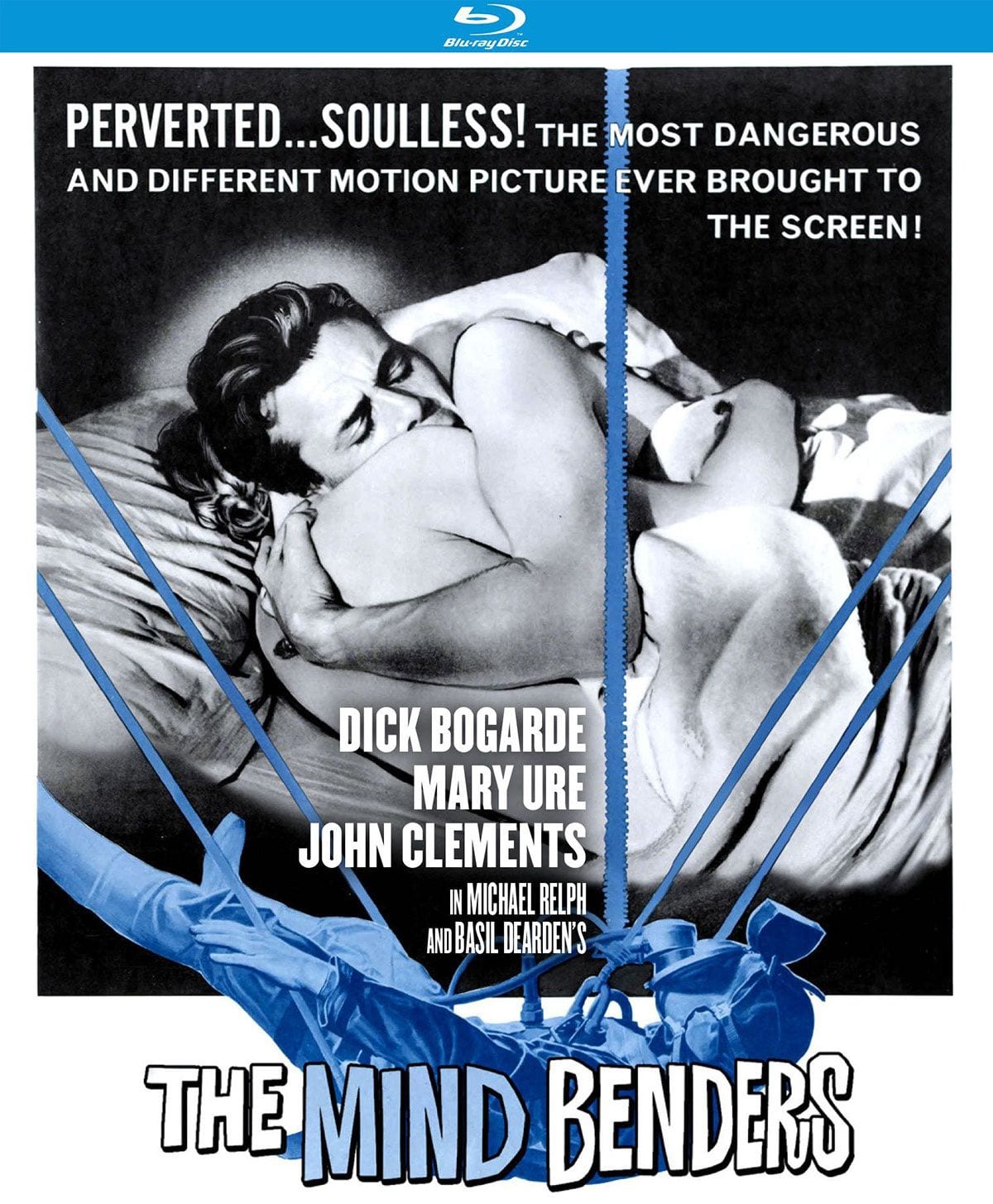
A nervous Oxford don (Dirk Bogarde) agrees to float in a sensory deprivation tank for hours, rendering him susceptible to brainwashing so that he turns against his wife (Mary Ure). A sinister blend of spy film, personal drama, mild science fiction and psychological horror, this classy British entry from producer Michael Relph and director Basil Dearden continues their exploration of uncomfortable social themes within the framework of thrillers, such as their previous Bogarde vehicle, the groundbreaking Victim (1961).
Writer James Kennaway’s handling of adult material, including a pre- and post-sex scene, a birth scene, and surprising profanity, earned the film a British X. Kino Lorber‘s 4K mastering shows off Denys Coop’s richly expressive black and white photography in this early example of the “mind control” paranoia that reverberated through the 1960s.
This film feels like a grim stepchild of John Frankenheimer’s The Manchurian Candidate (1962) and the grandfather of Ken Russell’s Altered States (1980). The commentary by Nathaniel Thompson and Howard S. Berger traces some of these links and the film’s context in Dearden’s output.
4. Mirage, Dir. Edward Dmytryk (1960) / Kino Lorber
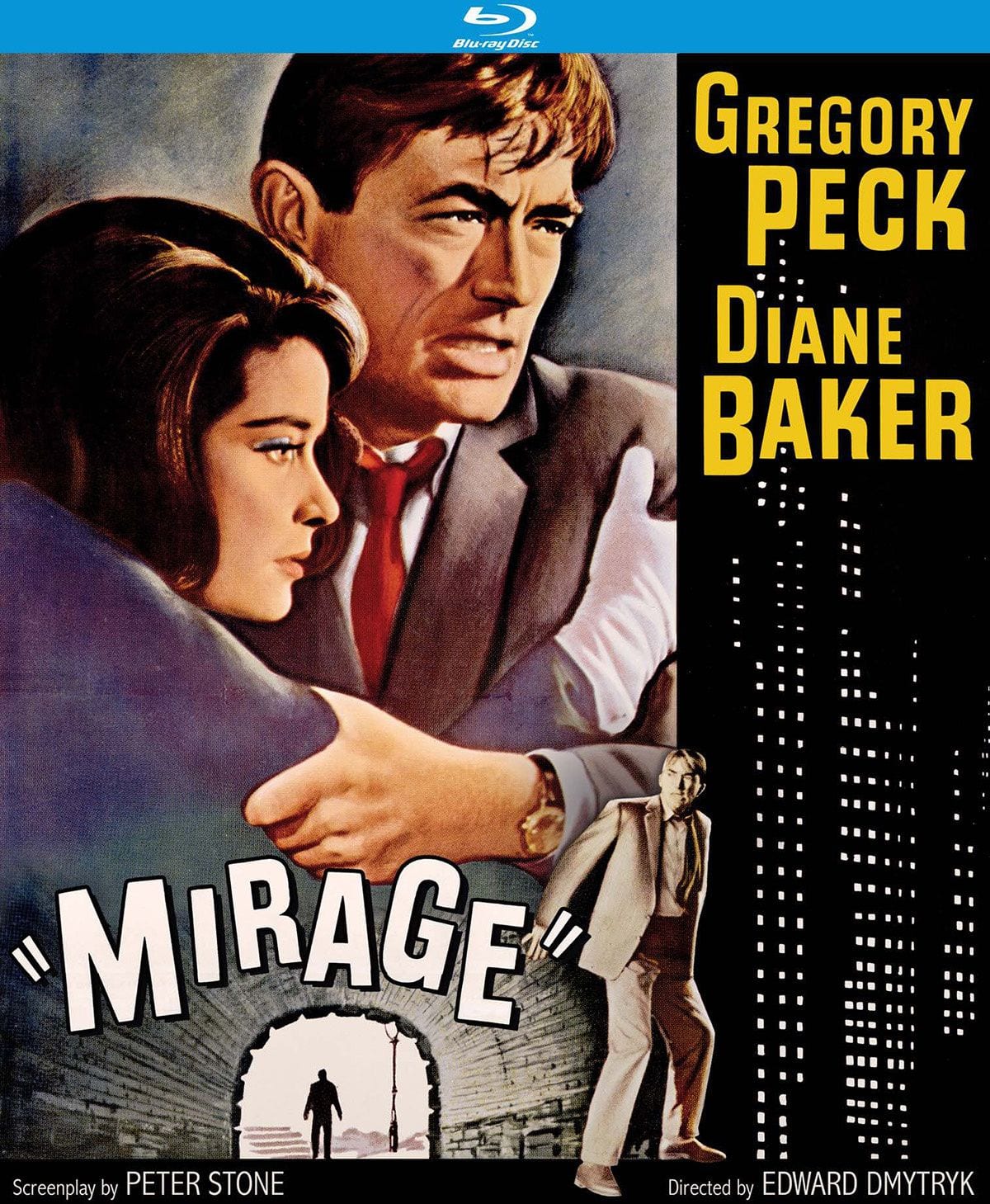
Nobody will confuse sleek 1960s thrillers Mirage and Blindfold (below, both from Kino Lorber) with horror films, and that makes them perfect for those members of your party who wish to enjoy goosebumps and spine-tingles without sliding into wholesale heebie-jeebies. They belong to the decade’s trend in glamorous, sophisticated post-Charade thrillers of enigmatic one-word titles, a world of romantic larks parallel to the shocking, violent post-Psycho thrillers. Both trends owed it all to Alfred Hitchcock, one being the North by Northwest branch and the other the Psycho branch.
Peter Stone, who wrote Stanley Donen’s Charade (1963), also scripted the witty, baffling, suspenseful Mirage, which I’m heretical enough to think is better. Gregory Peck plays David Stillwell, a boring white-collar drone (yet a deep, still well indeed) wandering down the stairs of a New York office building during a power outage that weirdly anticipates New York’s blackout that November, although this outage is only in one building. He meets the mysterious Shela (Diane Baker), who seems to know him. Then spooky, uncanny and dangerous things happen that couldn’t possibly have happened, so he goes to a cranky shrink (Robert H. Harris) and an oddball detective (Walter Matthau of Charade).
Since Peck plays a man with amnesia, he’s channeling his own performance in Hitchcock’s Spellbound (1945) as crossed with his title character in Nunnally Johnson’s The Man in the Gray Flannel Suit (1956). He foreshadows his role in another of these one-word larks, Donen’s Arabesque (1966), also co-written by Stone. The fun lies in working it all out with the support of Kevin McCarthy, George Kennedy (also of Charade), Leif Erickson and others — including Anne Seymour and Hari Rhodes, who both show up in Blindfold.
5.Blindfold, Dir. Philip Dunne (1966) / Kino Lorber
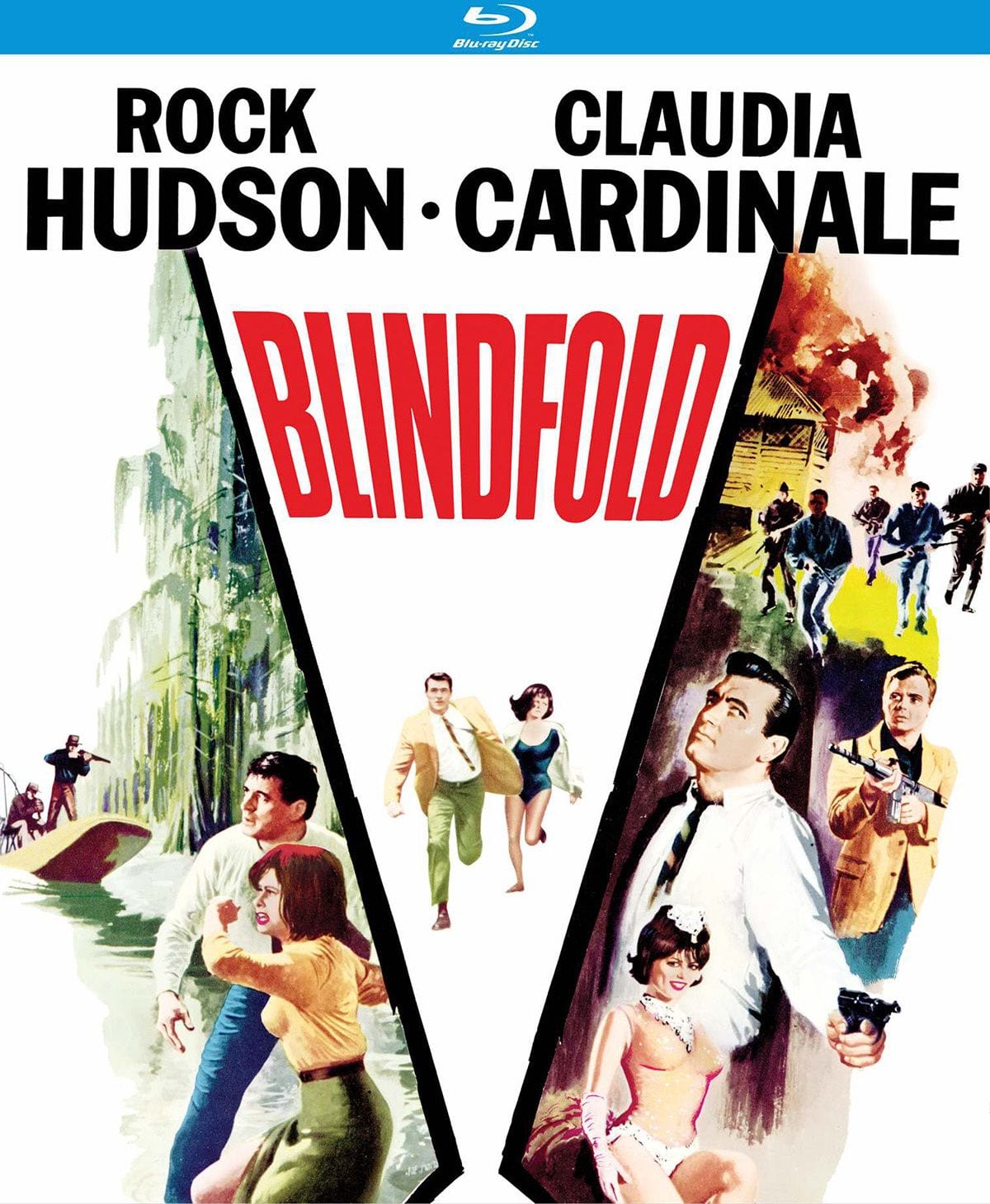
The helium-light
Blindfold, another movie obsessed with psychiatry, finds a confused and put-upon Dr. Bartholomew Snow (Rock Hudson) drafted by an NSA agent (Jack Warden) to analyze a top-secret basket case. Meanwhile, the patient’s daffy ball-of-fire sister (Claudia Cardinale) keeps popping up to ruin the doctor’s life. It ends up in an alligator swamp.
These Universal productions share personnel, including photographer Joseph MacDonald (sharp and shadowy black and white on
Mirage, Technicolor on Blindfold), editor Ted J. Kent (modern jump-cuts and flash images on Mirage), art director Alexander Golitzen and costumer Jean Louis. Mirage is scored seductively by Quincy Jones and Blindfold jauntily by Lalo Schifrin. Mirage is the funnier and more serious of the two, and it’s worn very, very well.
Kino Lorber‘s Blindfold disc is bare-bones, while Mirage comes with enthusiastic commentary on director Edward Dmytryk and the film’s blacklist connections from Nathaniel Thompson, Steve Mitchell and Howard Berger.
6. Billy the Kid vs. Dracula, Dir. William Beaudine (1966) / Kino Lorber

“It’s the 19th Century, not the Middle Ages!” Dracula’s lore is riddled with class elements of the noble aristocracy feeding on the peasants like cattle or sheep. It’s more of the same when transferred to the Wild West, where he exploits racial and gender tensions to his predatory ends.
The vampire (John Carradine, loving it) has his way with a peaceful Indian maiden, provokes a massacre of comic-relief stagecoach passengers to cover his tracks, and masquerades as the uncle of a pretty heiress (Melinda Plowman) to rob her legal power and hypnotize her into a fate worse than undeath — until her ex-outlaw boyfriend (Chuck Courtney) gets riled.
In an especially telling detail, the women in the film ally bravely against the vampire and keep over-ruling the weak-kneed men around them. They perceived the truth before the men did. These include the grieving German mother (Virginia Christine) and the unusual tough old doctor (Olive Carey). “I ain’t had much schoolin’,” says Billy to Doc. “Nor I, Billy, nor I,” she replies.
Mainly because of its title, this brisk entertainment has a reputation as a turkey. Some elements may look silly, like Dracula moving freely in daylight (revisionism!), but the film isn’t boring or “pretentious” or visually incompetent. It’s on the level of 1960s TV. Director William “One-shot” Beaudine’s rep for speed means he leaves in a shot where, if you look carefully, you can spot the guy who manipulates the bat doll; however, he’s framed so perfectly in the coach window that it’s a fun discovery.
Historians Lee Gambin and John Harrison give straight-up fan commentary in which they link the production to a hundred other movies.
7. Sudden Terror, Dir. John Hough (1970) / Kino Lorber
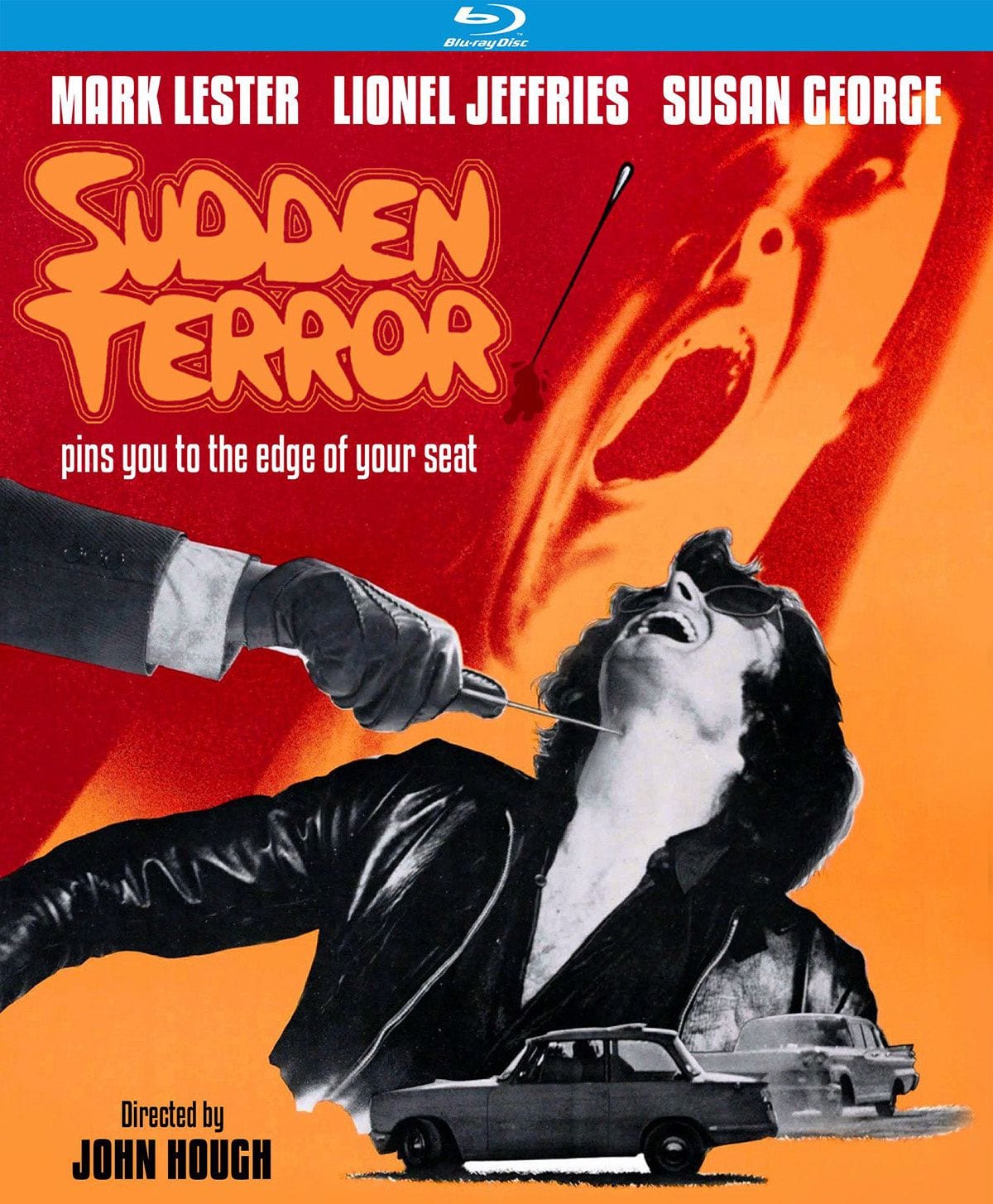
This and the next 1970 British thriller from EMI Studios, stylishly made by alumnae of TV’s The Avengers, could form a natural double feature of holidays gone south.
Sudden Terror (Eyewitness in the UK) stars Mark Lester of Carol Reed’s Oliver (1968) as an imaginative “boy who cries wolf” and who puts himself, his sister (Susan George) and grandfather (Lionel Jeffries) in danger when he witnesses a murder. The plot isn’t as important as the gorgeous Malta locales.
John Hough directs with such bustle and jostle that, in collusion with photographer David Holmes and editor Geoffrey Foot, the film anticipates Nicolas Roeg’s fragmentary style. One shot could even be a flashback or an ominous, unexplained flash-forward. The script is by illustrious playwright and Oscar winner Ronald Harwood (The Pianist).
The Kino Lorber disc retains an older commentary by Hough and now-deceased producer/re-writer Bryan Forbes, plus a new commentary by genre specialists Nathaniel Thompson and Howard S. Berger, who enthuse about its makers’ careers.
8. And Soon the Darkness, Dir. Robert Fuest (1970) / Kino Lorber
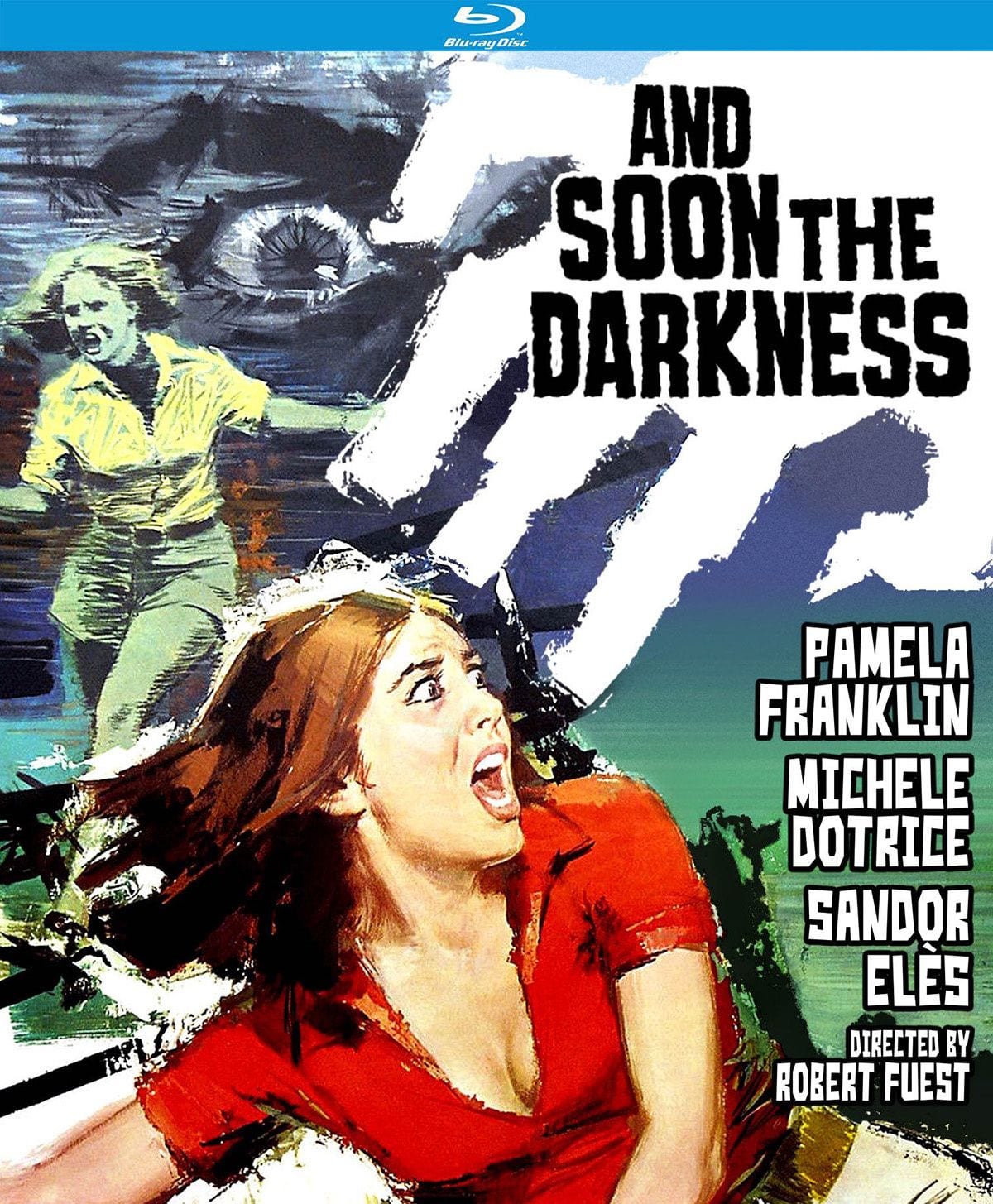
Also produced by Forbes for EMI, And Soon the Darkness stars Pamela Franklin and Michele Dotrice as English nurses on a French cycling holiday that turns nightmarish. Despite the title, the story takes place entirely in a beautiful sun-drenched countryside.
The script, by Brian Clemens and Terry Nation, is much trickier and subtler than the “boy vs. bad guys” of Sudden Terror, because it’s based on the viewer’s bafflement over what’s going on while avoiding any graphic violence. We identify with the free-floating fears and suspicions of Franklin’s character as she searches for her missing friend, and the last ten-minutes pull off a well-earned shock.
Again, there are two commentaries. The older one with Clemens and director Robert Fuest is filled with anecdotes. The newer one from historian Troy Howarth covers more background. (Please don’t confuse this film with the same-titled 2010 “remake”. Accept no substitutes.)
9. Phobia, Dir. John Huston (1980) / Kino Lorber
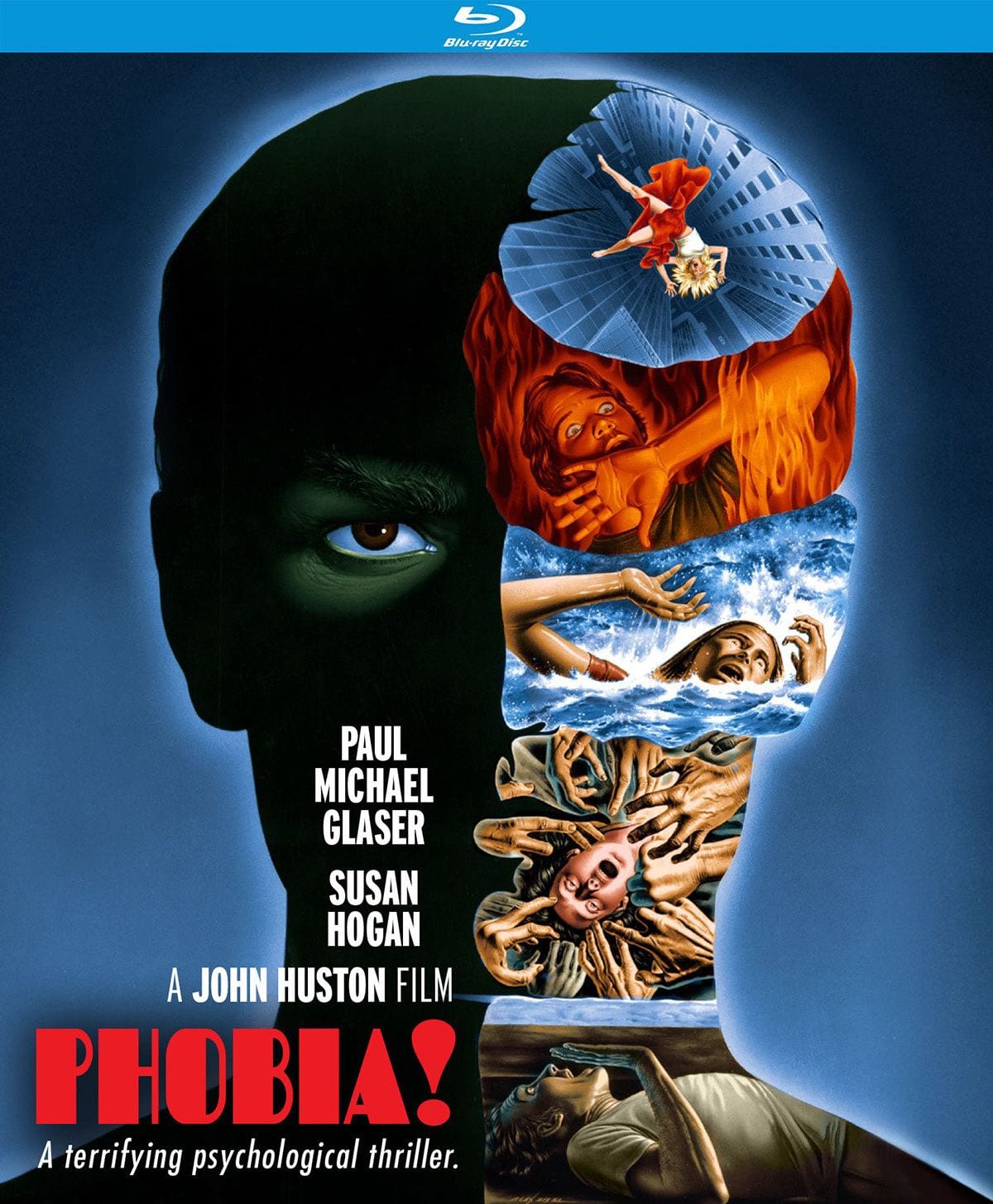
One of John Huston’s rarest and most critically dismissed pictures was a Canadian tax-shelter cheapie that’s been very hard to see. Surprise! It’s a totally Hustonian film, and opens with one of the most surreal segments of his career as convict-patients confront their fears via immersive and hallucinatory projections. Compare
Phobia! with the questionable experiments of The Mind Benders, or even with the breakdowns in Mirage and Blindfold.
As the human guinea pigs of our hotshot shrink (Paul Michael Glaser, weak link) meet untimely deaths, the whodunit aspect isn’t hard to figure out, yet this lean, absorbing thriller gets the job done. The presence of writer
Jimmy Sangster clues us in, if the title didn’t, that it’s a post-Psycho twister, and the story by Ronald Shusett and Gary Sherman reminds us that Sherman’s terrific Dead and Buried (1981) also has a major surprise up its sleeve.
Like Huston’s
Freud (1962) and Reflections in a Golden Eye (1967), it’s a Freudian quasi-horror film and links back to his interest in mental damage in Let There Be Light (1946). Like The List of Adrian Messenger (1963), it’s a “body count” thriller. And like most of Huston’s output, it’s a study of society’s losers. Kino Lorber‘s 4K-mastered Blu-ray, with missable commentary, allows us finally to judge that, while some of his films are better than others, he never made a bad movie.
10. Ringu Collection, Dir. Hideo Nakata (1998) / Arrow Video

One of the cornerstone franchises in today’s horror began with Koji Suzuki’s 1991 Japanese novel Ringu or Ring, which is based on the concept of viral replication. Accordingly, today’s digital era boasts more or less a million copies (or remakes), starting with Hideo Nakata’s 1998 film about the cursed VHS tape (Oh, technological irony!) that kills anybody who watches it — unless they avoid watching it, copy it, and pass it along. A vengeful young female ghost with long black hair provides an iconic “woman’s anger” concept to drive the mythology.
This film not only triggered a wave of often terrifying and seductive Japanese and Korean horror films (and their Hollywood remakes), but in retrospect it intersects with similar low-budget phenomena like the original The Blair Witch Project (1999), the Paranormal Activity series, and various techno-media-driven “found footage” films. The latter I call “diegetic camera” movies, in which bad things are locked within the media we use to record and consume, or that record and consume us in a mirror-within-mirror pattern.
Arrow’s three-disc set of four films include a sequel, a prequel, and the tangential Spiral (1998) from another Suzuki novel. The package is rounded out with commentaries, interviews and critical, appreciations. One of the most shocking things about these movies is to realize they’re now 20 years old.
- 13 Greatest Horror Directors of All Time - PopMatters
- 'Psycho': The Mother of All Horrors - PopMatters
- Creepy Myths, Curses and Urban Legends of Hollywood - PopMatters
- 'The Babadook' Isn't a Horror Movie About a Monster, But a Mother ...
- The 10 Weirdest Horror Movies of All Time - PopMatters
- The 10 Best Body Horror Films of All Time - PopMatters
- You'll Have Yourself a Very Scary Christmas with These Eight Films ...
- The 10 Worst Horror Movies of All Time - PopMatters
- Horror Cinema By the Numbers - PopMatters
- Trick 'r Treat (2008) - PopMatters
- 'Toy Story of Terror!' Delivers on Halloween and the Toy Story Name ...
- Depth of Field: John Carpenter - From Halloween to Has Been ...
- Drastically Divergent: The Sequels That Strayed Far Too Far ...
- Tricks or Treats? Ten Halloween Blu-rays That May Disrupt Your Life ...
- The Darkness Within: 13 Films That Burrow into Our Psyches ...
- The Narrative of the 'Halloween' Saga Gets Confused Over Time ...

